How to help your Child Memorise Times Tables
Times tables form the core of much of further and more advanced Mathematics and while it is often a boring chore, memorising times tables do indeed help in the long term Mathematical abilities and understanding. Being able to recall multiplication facts quickly also contributes to greater overall confidence in maths.
In teaching the Times Tables, it is important to understand the concepts and logic behind step-counting as represented by the times tables. For young children, teaching it in a game-like fashion helps to secure the understanding of how numbers can ‘skip’ and how they can be grouped by families.
That said, the young minds and memories of young children are so dynamic and malleable, that with the right support and encouragement they often learn and memorise these number facts exceedingly quickly and exceedingly well.
Depending on how your child learns best, one of the following methods will likely be able to help him or her learn to memorise the Times Tables.

Times Tables Tunes
This CD of times tables tunes worked exceedingly well for our 4-year-old who first started listening to it in the car on short journeys. We soon found her singing to herself and before we knew it, she had memorised her tables.
Some tunes are catchier and more memorable than others; and perhaps CDs are now a bit dated. There is now also a streaming version of this album too.
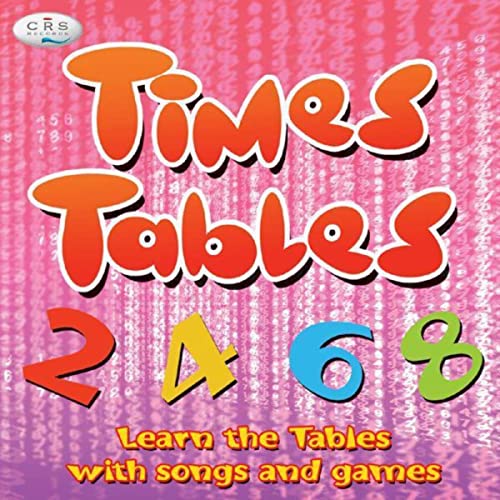
Learning Times Tables on Youtube
Youtube is without a doubt an excellent source of learning content and it is no different for learning times tables. There are a range of times tables related videos available on Youtube from simple verbal explanations to catchy tunes and colourful videos aimed at younger children.
Search Youtube for Time Tables
Khan Academy’s Multiplication Tables
In these videos, Sal Khan explains multiplication in a very straightforward, albeit, rather slightly boring way. Although he is not a fan of simply memorising facts, he does point out that it does make it very helpful to learn and memorise the tables.

Times Tables Fables
For children who are particularly fascinated by stories, far more than numbers, Times Fables provide a way in to learning and memorising the tables indirectly, through the telling of a story. It leaves out the 2 and 5 times tables and focuses only on 3, 4, 6, 7, 8 and 9 times tables.
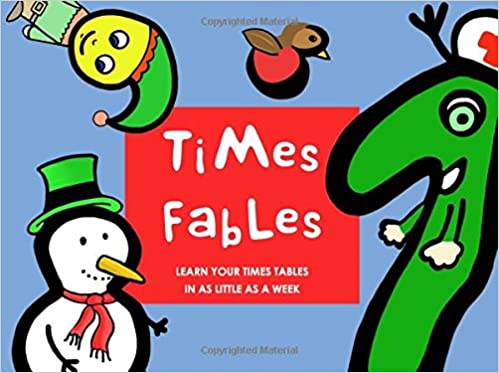
Specialist Times Tables Websites
Times Tables.co.uk
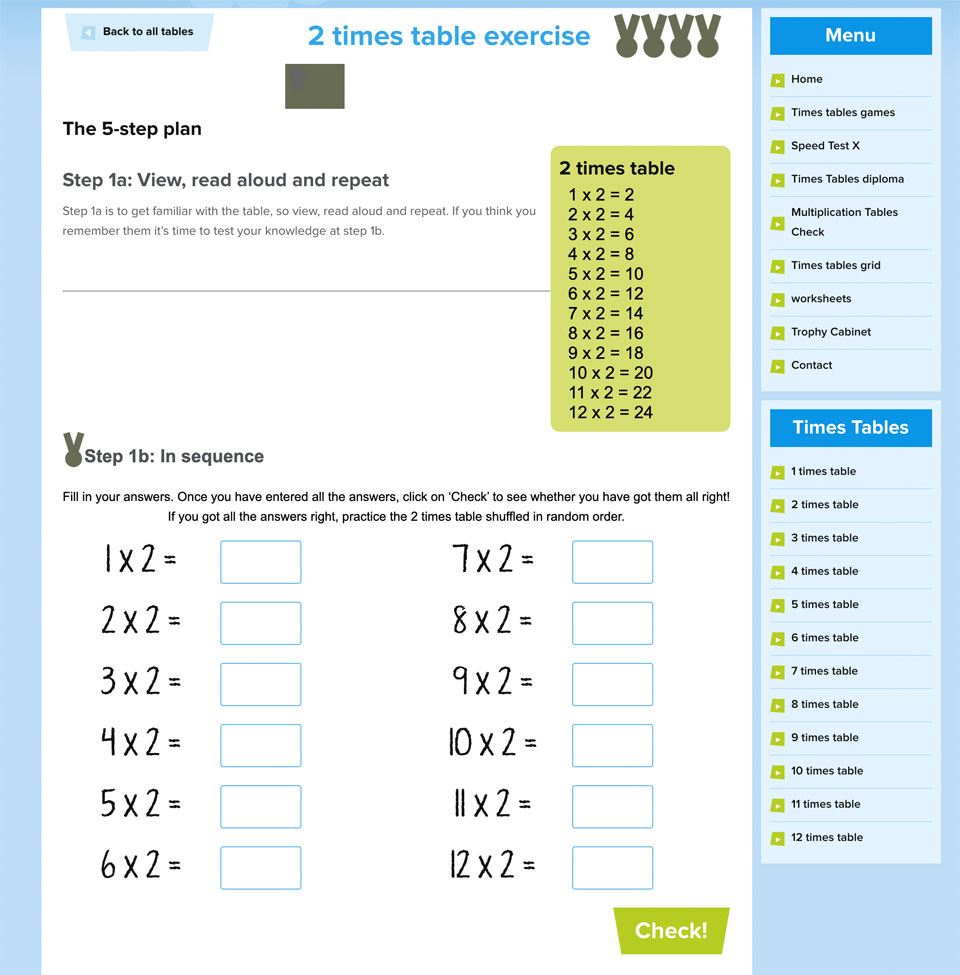
This is a relatively simple website taking visitors through a 5-step process of learning and memorising the times tables facts. Starting with Step 1a: View, read aloud and repeat the list of facts in the top right corner of the page. This is followed by exercises in sequence, a Drag-and-Drop activity, answering the sums in shuffled order, a multiple choice activity and finally a ‘Tables Diploma’ in which all 24 questions have to be answered correctly in 2 minutes.
The main aim of this website is of course, to embed times tables facts based on repetition and speed-recall exercises. Admittedly, a little boring and rather bland, it does get the job done for free.
Percy Parker

Based on the persona of an old granddad, Percy Parker sings upbeat cool songs to help kids learn their times tables. A lot of the content is available on Youtube and on the website. If you looking for a CD version though, it is only available from the website in the UK.
There is an 85 page workbook, complete with lyrics, song sheets and worksheets available for free here:
PDF Download: Sing your times tables with Percy Parker
Times Tables Rock Stars

Times Table Rock Stars according to its website description, is a carefully sequenced programme of daily times tables practice. Focusing on a different set of times tables each week, this is followed by a consolidation week, every third week to rehearse recently learnt times tables. This is done either online or with the paper format.
There are two plans to choose from – a Family Plan, currently £6 per year, for 2 adults and 3 children or a School Plan, £94 per year, for unlimited number of teachers and students. The main difference between the two plans are that the paper worksheets are not included in the Family plan.
Trials for schools are available for 4 weeks, while Families can request a refund within 30 days once they subscribe.
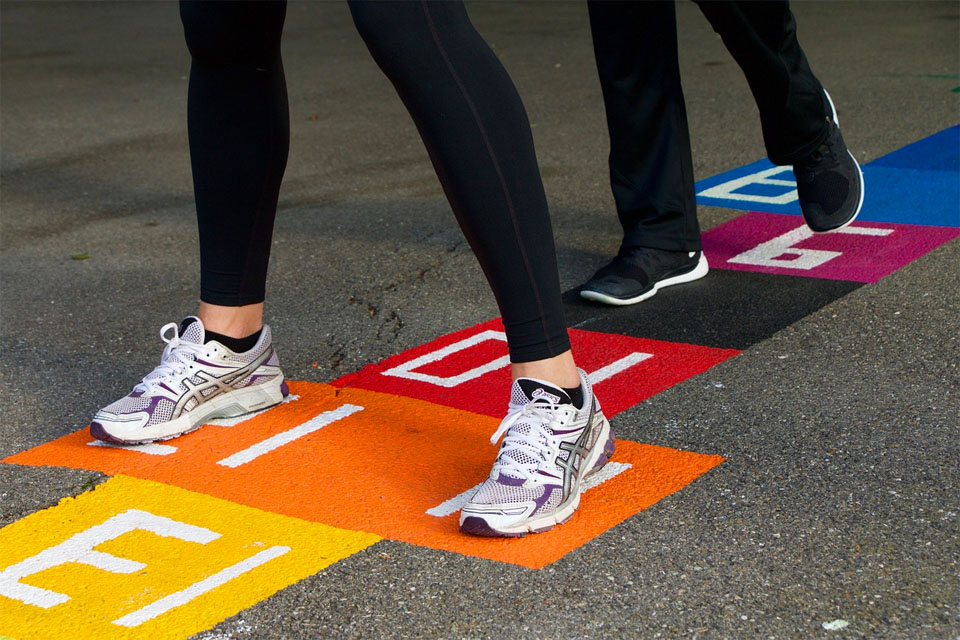
Linking Physical Activity to Times Tables
For children who plain enjoy being active and are constantly moving, a great way to reinforce and repeat the tables are to simply link a fairly repetitive activity to singing or calling out the times tables.
Climbing or jumping stairs
You can encourage your active child to associate each step of your stairs at home to a timetable sum. Initially, simply repeat each line of the times tables to each step.
For example: if your child is learning the 2 x, then for the first step say ‘One times two is two’ and so on. Once your child is familiar with each, they could ‘jump’ about the steps and recall each at random, before moving on to another set of times tables.
Hop-scotch, skipping, fridge dash
What if there are no stairs in your home?
Well, aside from the fun-filled possibilities of hop-scotch or simple skipping, it would be fairly straightforward to create a dashing game in which the numbers associated with the time table study are stuck on the fridge and then your child would have to dash to find the correct answer for every time table you call out.
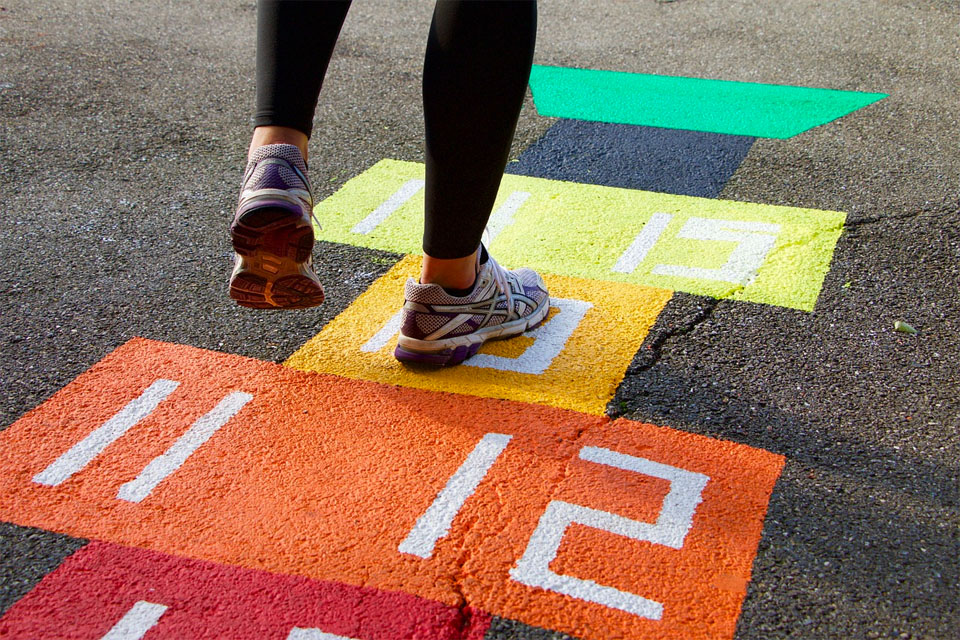
Learning the times tables really doesn’t need to be as difficult or frustrating as it used to be in the ‘old school’ days. There are a number of ways to help your child get to grips with learning their tables in an easy and fun way and given the numerous resources out there, you would almost certainly be able to find a way to pique their interest indirectly.









